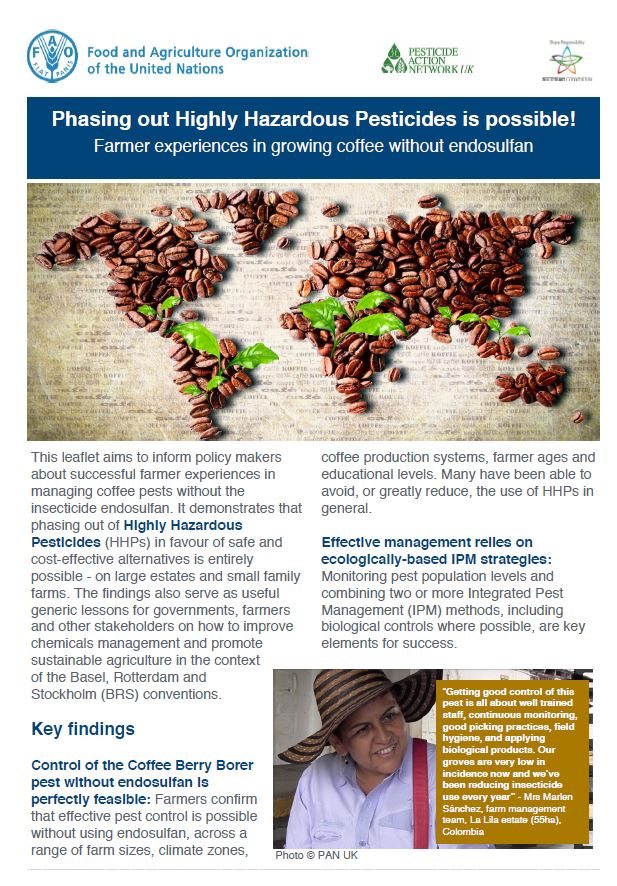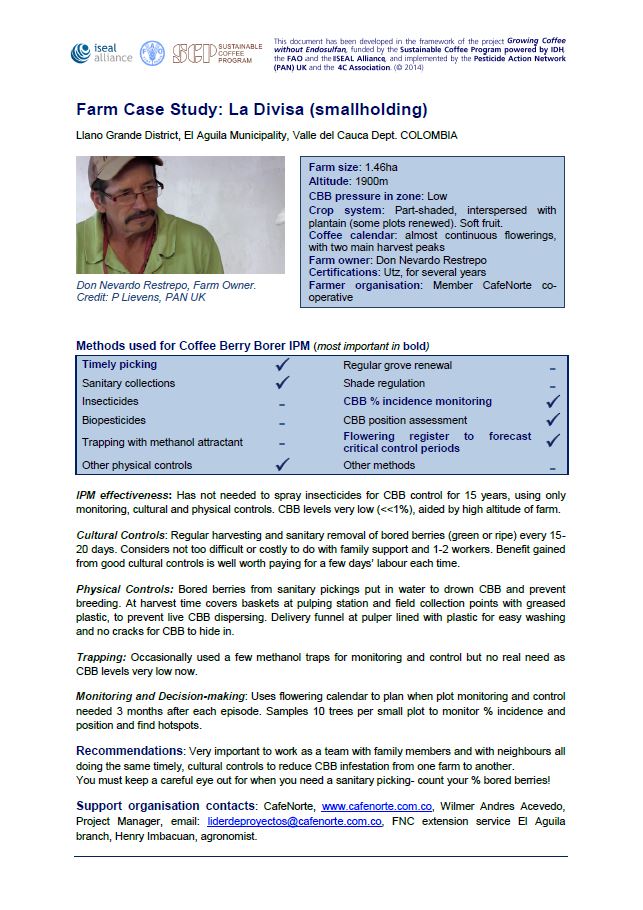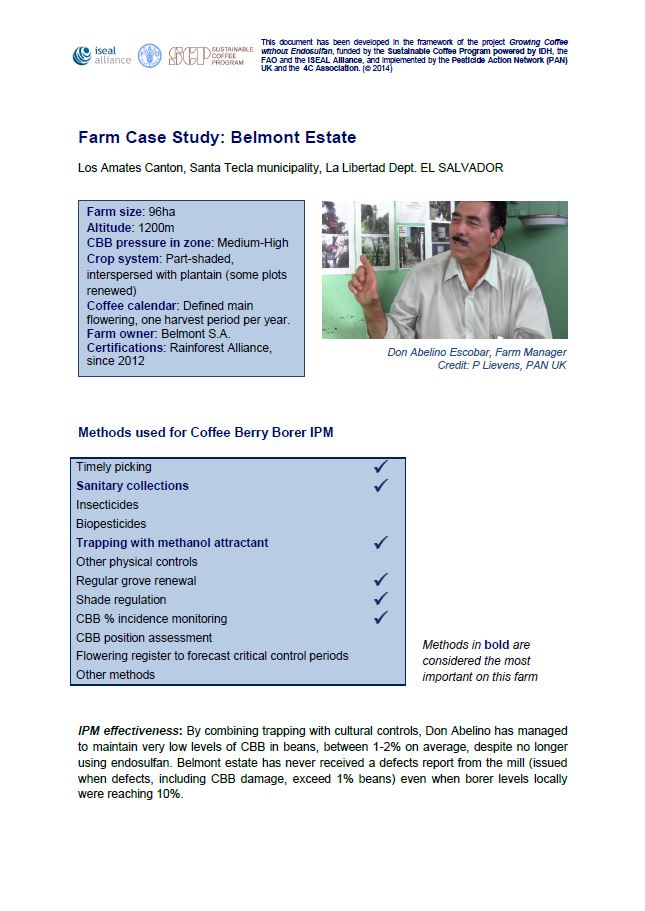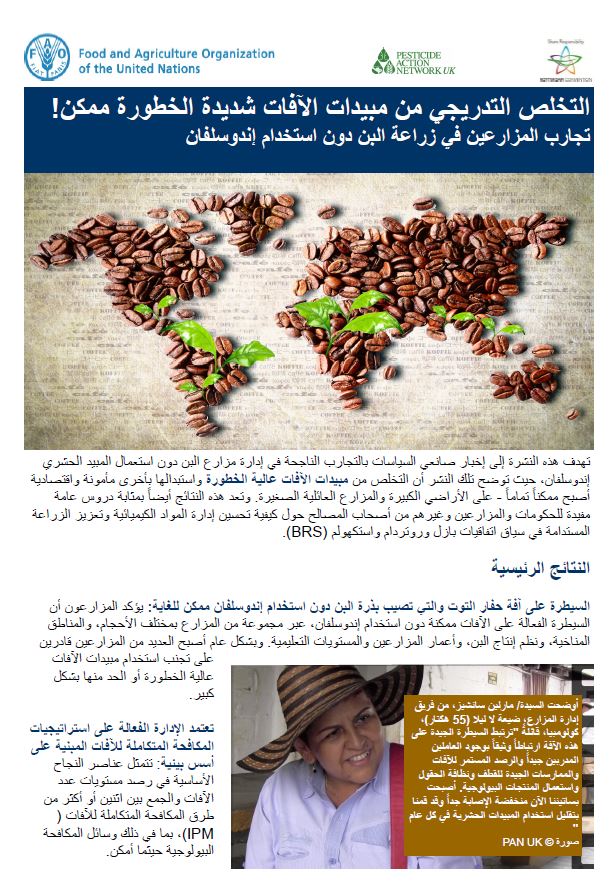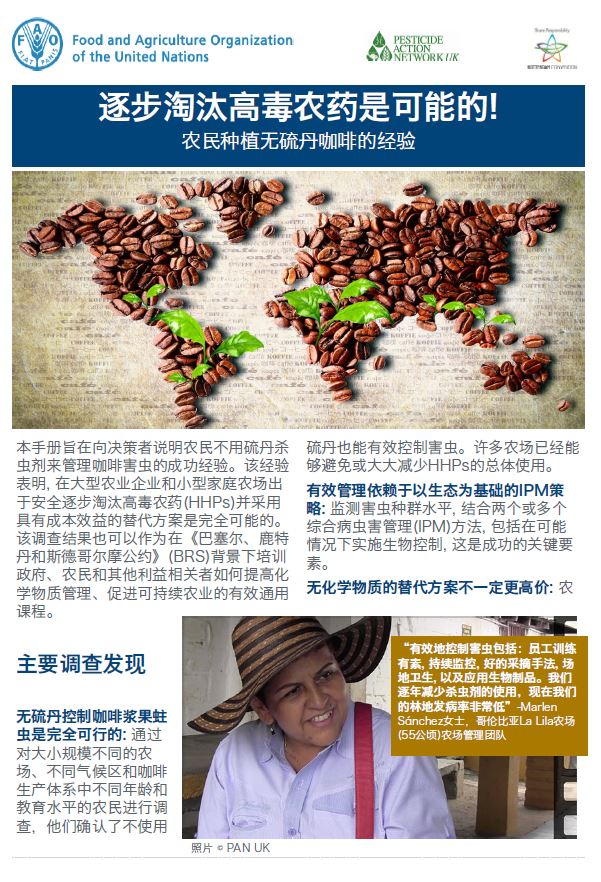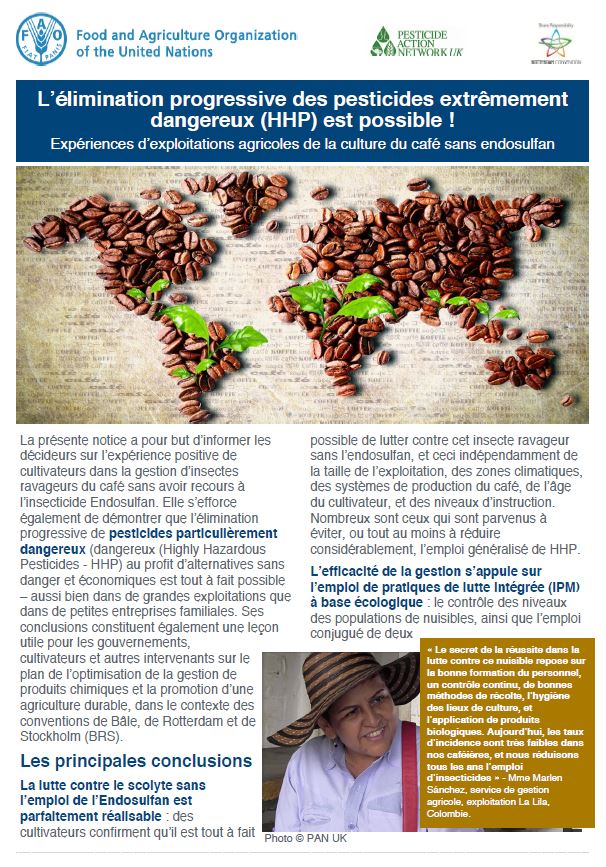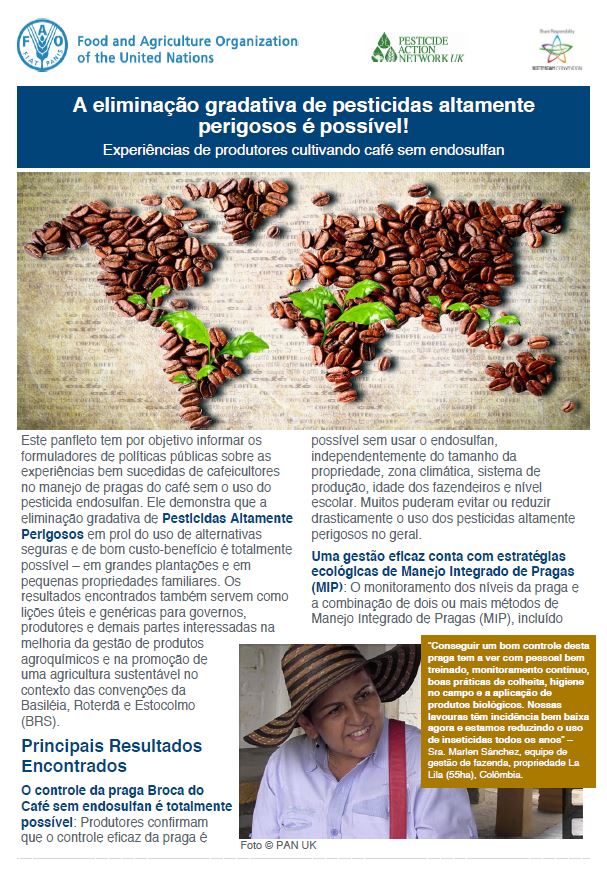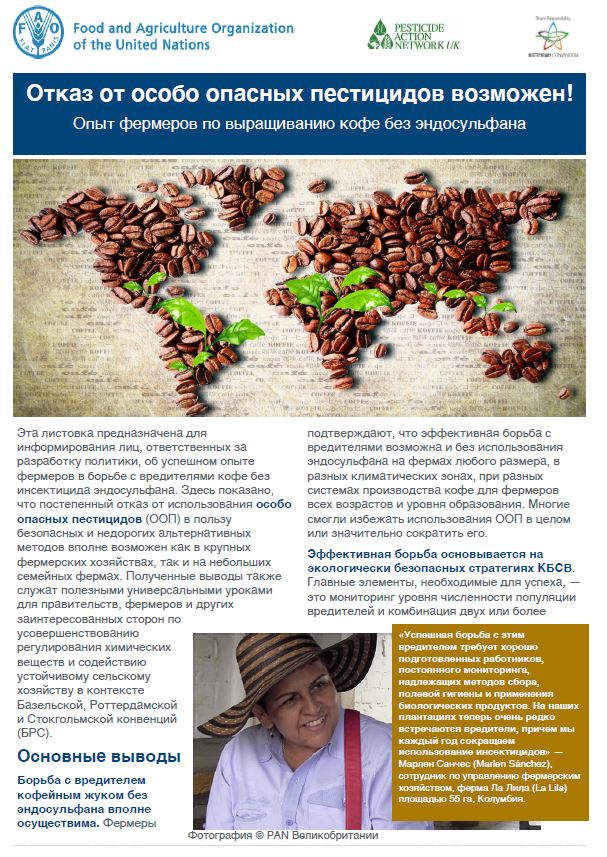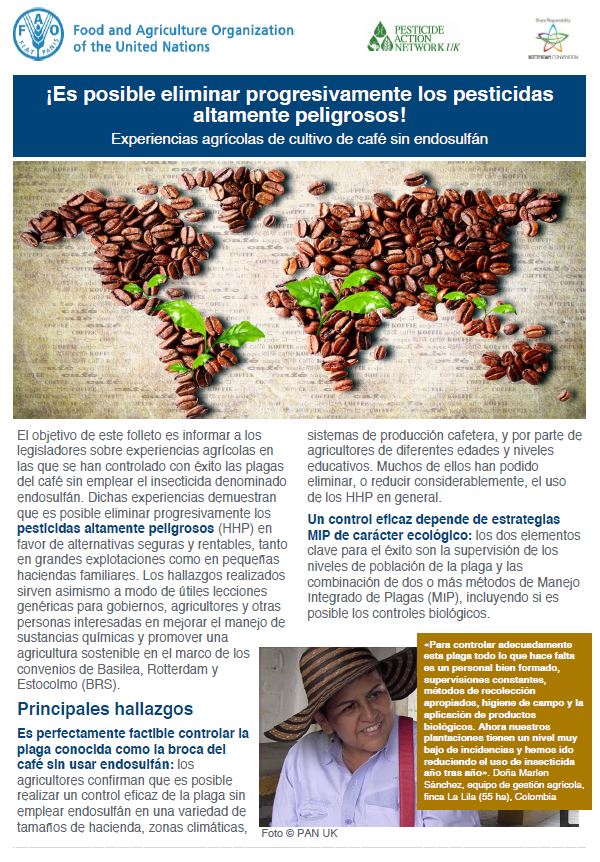Growing Coffee Without Endosulfan
PAN UK has demonstrated that it is possible to phase out the highly hazardous pesticide, endosulfan, when growing coffee. This has been proven on both large estates and small family farms across climate zones, coffee production systems and farmer educational levels.
The project was a collaboration between PAN UK, 4C Association, the FAO, The Sustainable Coffee Program and the ISEAL Alliance and collected information on the IPM methods used on 21 certified farms in Colombia, Nicaragua and El Salvador.

The Problems With Endosulfan
Endosulfan is a highly toxic, antiquated insecticide, and one of the last organochlorine pesticides still in use. It’s so harmful that before it was recently banned across most of West Africa in 2008, it poisoned thousands of cotton farmers and family members through occupational or accidental exposure, with hundreds of fatalities. It is also highly toxic to fish, birds, bees and aquatic life. The pesticide causes long term health problems too – epidemiological studies link chronic exposure to autism, delayed puberty, and birth defects of the male reproductive system in humans.
Endosulfan is Very Persistent
It stays in the environment long after it’s been applied, it accumulates in organisms and across food chains, and it travels the globe and contaminates ecosystems far from where it’s used. Its listing by the Stockholm Convention on Persistent Organic Pollutants (POPs) in 2011, following a successful campaign by PAN UK and others, triggered its inclusion on the prohibited lists of a number of supply chain standards. The elimination of this highly hazardous pesticide will bring numerous health and environmental benefits, but some producers in the developing world may find it difficult to adapt to its removal – particularly in the coffee sector.
Resources and Guidance Documents
PAN UK has compiled ‘real world’ information on experiences of Latin American coffee farmers who have successfully eliminated endosulfan, in smallholder associations and on coffee estates.
Guidance documents
- Comparison of IPM Methods for Coffee Berry Borer
- Experiences with cultural controls
- Experiences with Beauveria biopesticide
- Experiences using traps with attractants
- Experiences with chemical control
- Experiences in monitoring decision making
Other background documents
Find Out More
Watch our videos below featuring farmer experiences in Latin America. These cover integrated pest management methods on good cultural practices, biological control, trapping, monitoring, and decision-making.
For alternative versions in Spanish, Portuguese and French please find our YouTube channel here.
Read our briefing on weed management when growing coffee to reduce or eliminate herbicide use.
Cultural Controls
Biological Controls
Trapping
Farmer Perspectives
Monitoring
Phasing Out HHPs is Possible
To read this leaflet in another language click here.

